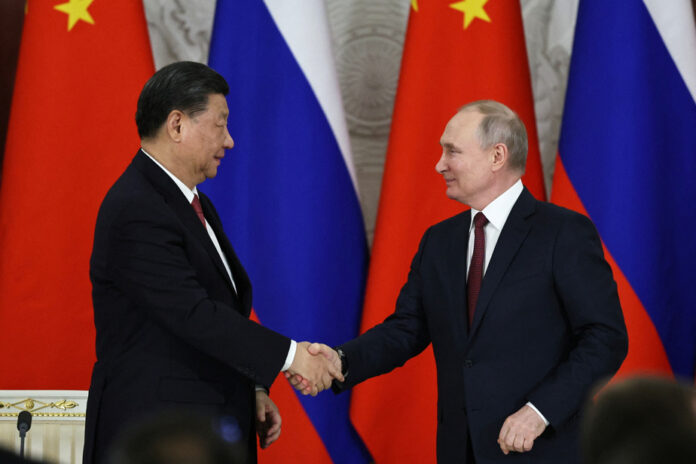(Moscow) Vladimir Putin and Xi Jinping reached an agreement on Tuesday on the gigantic Siberian Force 2 gas pipeline project, a symbol of Moscow’s desire to redirect its economy towards Asia in the face of international sanctions.
“All agreements have been reached” for the implementation of the Siberian Force 2 project, Vladimir Putin welcomed, under the golds of the Kremlin, after discussions between the Russian and Chinese delegations.
“At commissioning,” he said, “50 billion cubic meters of gas” will pass through this 2,600 kilometer long gas pipeline that will connect Siberia to China’s Xinjiang (northwest), via the steppes of Mongolia.
The Russian leader, however, did not give details on the timetable for the project, which must complete an already existing gas pipeline, Siberian Force, which starts from the Russian Far East.
This announcement will allow Russia to significantly increase its gas deliveries to China, at a time when its economy must turn away from the European market since the sanctions following the attack in Ukraine.
Expected forward delivery quantities are almost as much as Nord Stream 1 (55 billion cubic meters) before it was shut down following sabotage in September 2022.
Objective “by 2030”: deliver a total of at least 98 billion cubic meters of gas and 100 million tonnes of liquefied natural gas (LNG) to its Chinese ally, promised the Russian leader.
Vladimir Putin assured his counterpart Xi Jinping that Russia was able to supply “China’s growing demand for energy”, while Russian hydrocarbons are sanctioned in the West.
In their final joint statement, the two presidents underlined their desire “to pursue an even closer partnership in the energy sector”.
The Russian state giant Gazprom announced on Tuesday that it had beaten its record for daily deliveries the day before via the Siberian Force gas pipeline, which currently links gas fields in the Russian Far East to northeast China.
“Gazprom […] set a new historic record for daily gas supplies to China on Monday,” Gazprom said in a statement, without giving specific figures.
A source within the group noted that “daily volumes” delivered to China are “commercial information” and will not be disclosed.
Last year, gas deliveries via Force de Sibérie to China reached an all-time high of 15.5 billion cubic meters.
By 2025, Moscow intends to multiply its exports by 2.5 through this infrastructure, to 38 billion cubic meters each year.
Well aware of the potential of this gas pipeline, Vladimir Poutine had described it Sunday in an article of “business of the century”.
Forced to find new buoyant markets, the Russian president does not hide his desire to make China his main economic partner, at the risk, according to some observers, of becoming a vassal of Beijing.
“Trade and economic cooperation is a priority in Russia-China relations,” Putin said, saying he expects trade in 2023 to “pass the threshold” of $200 billion, which would constitute a new record after that of 2022 (185 billion).
He also said he was “ready to create a joint working body for the development of the Northern Sea Route”, one of the routes in the frozen waters of the Arctic, now more easily navigable due to the melting of the ice cream.
Moscow hopes that this route will eventually make it possible to increase the transport of hydrocarbons to Asia, in particular those produced in the Russian Arctic, by connecting the Atlantic, Pacific and Arctic oceans.
Vladimir Putin also stressed the importance of developing rail infrastructure between Russia and China, as existing ones are saturated according to experts.
He also spoke in favor of “using the Chinese yuan in settlements between Russia and countries in Asia, Africa and Latin America”, another way to accelerate the de-dollarization of its economy. and Russia’s pivot to Asia.















